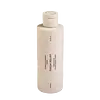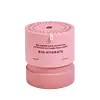What's inside
What's inside
 Key Ingredients
Key Ingredients

 Benefits
Benefits

 Concerns
Concerns

 Ingredients Side-by-side
Ingredients Side-by-side

Water
Skin ConditioningPropanediol
SolventGlycerin
HumectantEthoxydiglycol
HumectantPalmitoyl Pentapeptide-4
Skin ConditioningSalvia Sclarea Extract
AntiseborrhoeicOpuntia Ficus-Indica Stem Extract
Skin ConditioningFomes Officinalis Extract
Skin ProtectingLactobionic Acid
BufferingMandelic Acid
AntimicrobialSalix Alba Bark Extract
AstringentGluconolactone
Skin ConditioningSodium Hyaluronate
HumectantEthylhexylglycerin
Skin ConditioningXanthan Gum
EmulsifyingPhenoxyethanol
PreservativePanthenol
Skin ConditioningDimethyl Isosorbide
SolventPotassium Sorbate
PreservativeSodium Benzoate
MaskingWater, Propanediol, Glycerin, Ethoxydiglycol, Palmitoyl Pentapeptide-4, Salvia Sclarea Extract, Opuntia Ficus-Indica Stem Extract, Fomes Officinalis Extract, Lactobionic Acid, Mandelic Acid, Salix Alba Bark Extract, Gluconolactone, Sodium Hyaluronate, Ethylhexylglycerin, Xanthan Gum, Phenoxyethanol, Panthenol, Dimethyl Isosorbide, Potassium Sorbate, Sodium Benzoate
Water
Skin ConditioningGlyceryl Polymethacrylate
Glycerin
HumectantAloe Barbadensis Leaf Extract
EmollientButylene Glycol
HumectantPropanediol
SolventDimethicone
EmollientPotassium Azeloyl Diglycinate
Skin ConditioningIsopentyldiol
HumectantHyaluronic Acid
HumectantAmmonium Acryloyldimethyltaurate/Vp Copolymer
Lactobacillus Ferment
Skin ConditioningZea Mays Starch
AbsorbentEthoxydiglycol
HumectantGlycogen
HumectantHexacarboxymethyl Dipeptide-12
HumectantCentella Asiatica Leaf Extract
Skin ConditioningCamellia Sinensis Leaf Extract
AntimicrobialBacillus Ferment
Skin ConditioningLactic Acid
BufferingCaprylyl Glycol
EmollientEthylhexylglycerin
Skin Conditioning1,2-Hexanediol
Skin ConditioningTriethyl Citrate
MaskingButyrospermum Parkii Butter
Skin ConditioningPolysilicone-11
Sodium Polyacrylate
AbsorbentDecyl Glucoside
CleansingPhenylpropanol
MaskingPhenoxyethanol
PreservativePotassium Sorbate
PreservativeWater, Glyceryl Polymethacrylate, Glycerin, Aloe Barbadensis Leaf Extract, Butylene Glycol, Propanediol, Dimethicone, Potassium Azeloyl Diglycinate, Isopentyldiol, Hyaluronic Acid, Ammonium Acryloyldimethyltaurate/Vp Copolymer, Lactobacillus Ferment, Zea Mays Starch, Ethoxydiglycol, Glycogen, Hexacarboxymethyl Dipeptide-12, Centella Asiatica Leaf Extract, Camellia Sinensis Leaf Extract, Bacillus Ferment, Lactic Acid, Caprylyl Glycol, Ethylhexylglycerin, 1,2-Hexanediol, Triethyl Citrate, Butyrospermum Parkii Butter, Polysilicone-11, Sodium Polyacrylate, Decyl Glucoside, Phenylpropanol, Phenoxyethanol, Potassium Sorbate
Ingredients Explained
These ingredients are found in both products.
Ingredients higher up in an ingredient list are typically present in a larger amount.
Ethoxydiglycol is a synthetic solvent.
Solvents are used to keep ingredients together in a product. They can help dissolve ingredients to stable bases or help evenly distribute ingredients throughout the product.
Ethoxydiglycol also helps deliver other key ingredients into the skin.
Learn more about EthoxydiglycolEthylhexylglycerin (we can't pronounce this either) is commonly used as a preservative and skin softener. It is derived from glyceryl.
You might see Ethylhexylglycerin often paired with other preservatives such as phenoxyethanol. Ethylhexylglycerin has been found to increase the effectiveness of these other preservatives.
Glycerin is already naturally found in your skin. It helps moisturize and protect your skin.
A study from 2016 found glycerin to be more effective as a humectant than AHAs and hyaluronic acid.
As a humectant, it helps the skin stay hydrated by pulling moisture to your skin. The low molecular weight of glycerin allows it to pull moisture into the deeper layers of your skin.
Hydrated skin improves your skin barrier; Your skin barrier helps protect against irritants and bacteria.
Glycerin has also been found to have antimicrobial and antiviral properties. Due to these properties, glycerin is often used in wound and burn treatments.
In cosmetics, glycerin is usually derived from plants such as soybean or palm. However, it can also be sourced from animals, such as tallow or animal fat.
This ingredient is organic, colorless, odorless, and non-toxic.
Glycerin is the name for this ingredient in American English. British English uses Glycerol/Glycerine.
Learn more about GlycerinPhenoxyethanol is a preservative that has germicide, antimicrobial, and aromatic properties. Studies show that phenoxyethanol can prevent microbial growth. By itself, it has a scent that is similar to that of a rose.
It's often used in formulations along with Caprylyl Glycol to preserve the shelf life of products.
Potassium Sorbate is a preservative used to prevent yeast and mold in products. It is commonly found in both cosmetic and food products.
This ingredient comes from potassium salt derived from sorbic acid. Sorbic acid is a natural antibiotic and effective against fungus.
Both potassium sorbate and sorbic acid can be found in baked goods, cheeses, dried meats, dried fruit, ice cream, pickles, wine, yogurt, and more.
You'll often find this ingredient used with other preservatives.
Learn more about Potassium SorbatePropanediol is an all-star ingredient. It softens, hydrates, and smooths the skin.
It’s often used to:
Propanediol is not likely to cause sensitivity and considered safe to use. It is derived from corn or petroleum with a clear color and no scent.
Learn more about PropanediolWater. It's the most common cosmetic ingredient of all. You'll usually see it at the top of ingredient lists, meaning that it makes up the largest part of the product.
So why is it so popular? Water most often acts as a solvent - this means that it helps dissolve other ingredients into the formulation.
You'll also recognize water as that liquid we all need to stay alive. If you see this, drink a glass of water. Stay hydrated!
Learn more about Water